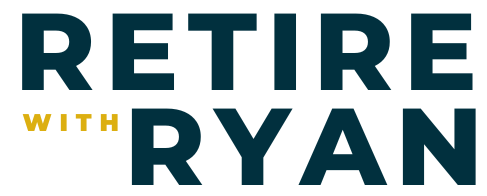What To Expect Once I've Hired A Fee-Only Financial Advisor (Part 4), #204
What should you expect once you’ve hired a fee-only financial advisor? Fee-only financial advisors typically offer financial planning, investment management, or a combination of both.
In this episode, I’ll cover what each process will be like because what you’re hiring your financial advisor to do will determine how your experience will be (and what the relationship will look like).
This is Part 4 of a five-part series about financial planners to celebrate the release of my first book, “Fiduciary: How to Find, Hire, and Establish a Trusted Partnership with a Fee-Only Advisor.”
You will want to hear this episode if you are interested in...
[0:48] How to Find and Hire a Financial Advisor
[2:02] What is financial planning?
[3:36] The financial planning process + experience
[9:56] Understanding the implementation schedule
[12:37] The investment management process + experience
[27:15] What we’re covering in part 5
The financial planning process + experience
The financial planning process starts with signing a planning agreement. It may lay out the services that will be provided and the deliverables you will get. Once you’ve signed an agreement and paid them, they’ll ask you for the documents they need to begin working on your financial plan.
This could be things like tax returns, pension statements, Social Security Statements, your current budget, net worth statements, investment account statements, insurance statements, and much more. Everything in your financial life will be important for them to review so they can better understand you and the goals you want to achieve.
Once they’ve looked over these documents, they’ll usually schedule a preliminary meeting to get any clarification they may need. Once they’re confident in the data, they’ll create your financial plan. They can help you with things like:
Cashflow planning: What income do you have coming in? What are your expenses? How much is being saved? Can you improve your cash flow in any way?
Retirement planning: What age do you want to retire? Are you on track? How much should you be spending?
Insurance planning: Do you have life insurance? Disability Insurance? Health insurance? Are you considering long-term care insurance?
Tax planning: Are you taking the appropriate deductions? Should you be putting more into Roth accounts? What will your income look like in retirement? Should you take deductions now or wait until later in life?
Investment planning: How is your money currently invested? Is it the right investment mix? What should your asset allocation be? What changes do you need to make?
Estate planning: Do you have a current will or trust? Do you have an overall plan for your estate?
Once all of this is done, your financial advisor will typically provide you with a written financial plan so you have something to follow as you go forward.
The investment management process + experience
When you’re hiring a fee-only financial advisor to manage your portfolio, it’s usually contracted as a percentage of assets under management (AUM). This is preferable because it means your advisor has a vested interest in your success. The more your portfolio grows, the more they make. Our fee starts at 1.25% per year and declines to 1% once the portfolio reaches over $1 million.
What does the process look like? You’ll sign an agreement that will detail their fee schedule, how the fee is calculated, how the fee is collected, and what they have the authority to do. For example, can they make any changes they think will be in your best interest? I’d want to give them this authority without having to contact you.
You’ll want to make sure the firm keeps your money somewhere they can make changes to it while still being a third-party (i.e. Charles Schwab or Fidelity). You don’t want the money held in the advisor’s firm.
You’ll need to open accounts for your advisor to manage. Once the accounts are open, you need to transfer your money into those accounts so your advisor can manage them. You can usually do this through the Automated Customer Account Transfer Service (ACATS). Brokerage firms that participate in this system can transfer accounts electronically between each other.
Once your money has been transferred, it has to be invested. You’ll have a conversation with your advisor about your investment strategy, asset allocation, risk level, and actual purchases. We create an investment policy statement to lay out goals and objectives as well as your strategy and risk level (best and worst-case scenarios).
Listen to the whole episode for a detailed look at working with each type of financial advisor to help you determine exactly what you’re looking for.
Resources Mentioned
Subscribe to the Retire with Ryan YouTube Channel
Fiduciary: How to Find, Hire, and Establish a Trusted Partnership with a Fee-Only Advisor
